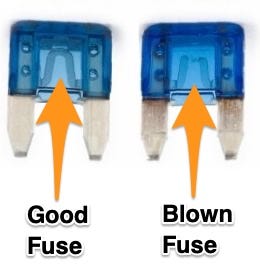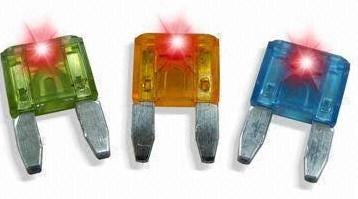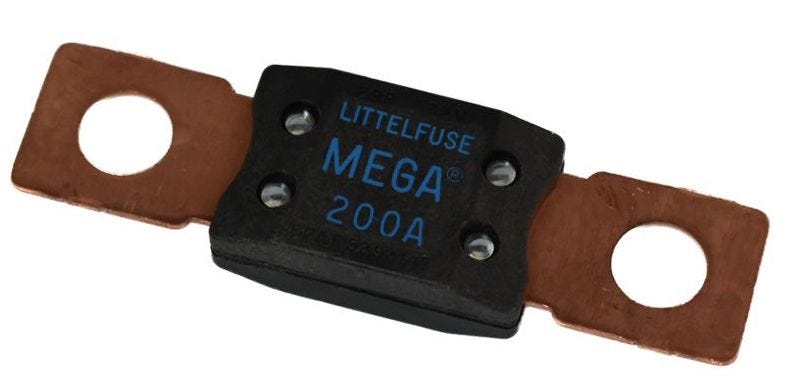Dear Mike –
Finally getting back to you on our electric problem from last fall. We took it into our local mechanic and he found the problem to be a Fusible Link. All tests out OK right now.
We were able to get the codes from a Ford dealer on the way home. That was after our dash lights went out for a minute or two. The Ford dealer didn’t normally see motorhomes but after many other places couldn’t see us for months, they were able to get us in at lunch hour. - Peggy B.
Hey Peggy,
Glad this worked out for you. And this is a great opportunity to discuss exactly what a fusible link is…
It can be a point of confusion when troubleshooting an electrical system that’s dead. But in reality a fusible link is just a really big fuse.
Inside a conventional fuse
Basically, a fuse is just a short section of wire that’s much smaller in diameter and can carry less current than the load conductors.
Here’s what one looks like that’s good, as well as what it looks like after it’s blown. You can see that the U-Shaped wire inside of the good fuse on the left is continuous. But in the blown fuse on the right there’s a little section of the wire that’s melted. And that’s what prevents any more current from flowing, which is what protects the other wires from melting. Essentially, it’s a sacrificial element which is designed to melt before any other damage can occur.
Some have lights…
And some of these fuses have a built-in miniature LED bulb which lights up when the fuse is blown, and the device it’s powering is turned on. So when the light is off, the fuse is good. But when the light is on, the fuse is blown. It’s a bit counterintuitive, but that’s how it works.
This is really handy, since you can often find a blown fuse just by looking for a light in the panel of other fuses. More on that later…
What is a fusible link?
A fusible link is just a large amperage fuse that can have a replaceable fuse element. These can have current ratings of hundreds of amperes.
And typically, a fusible link bolts onto a busbar on the battery terminal or inline with the wiring. And when it “blows” from too much current flow, a fusible element opens up internally just like a conventional fuse.
How to test one…
Since a fusible link is really just a big fuse, you test it like you test any other fuse. You can use any digital or analog multimeter with an ohms or continuity function to test a fuse or fusible link that’s out of the circuit. A good fuse will cause the meter to beep on the continuity setting, but not beep with a blown fuse. It’s really that simple.
However, testing for a blown fuse or fusible link while it’s in-circuit with power on is a little less obvious. I’ll post a video on how that works next week.
See you then… Mike









Excellent. Thanks again.
Mike your explanation was clear and the fact that you but in auto and RV fuses in the text was correct, thanks. I have a question " I purchased an outdoor lite the power was listed 12vt so I called the company and Home Depot and asked is this AC or DC neither one could give me an answer. So I decided to try the battery first and it worked (at the time I did not have a transformer) so I was wondering if you know if the 12 vt meant DC?